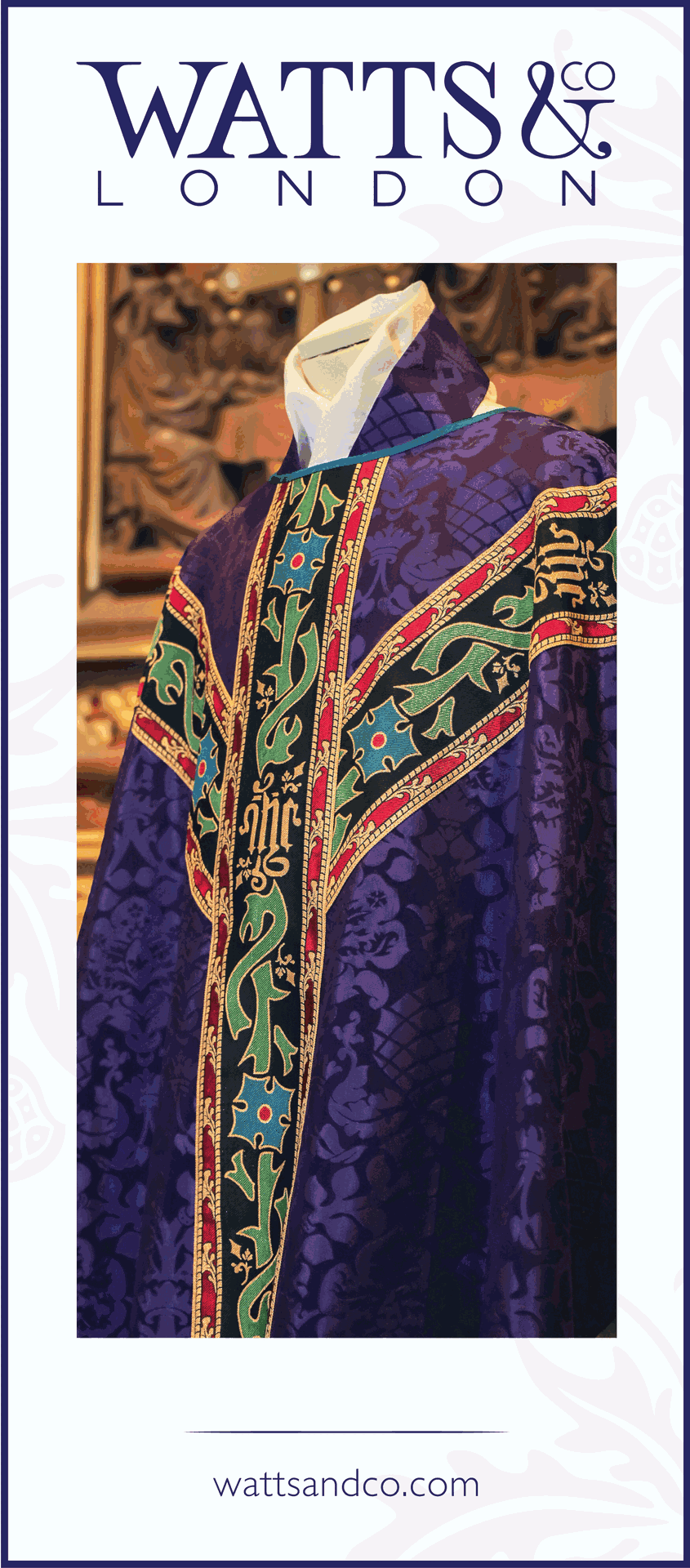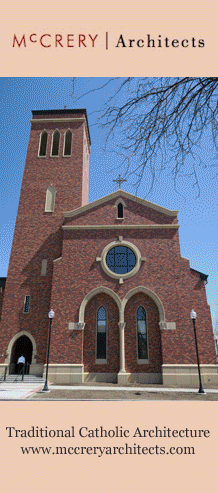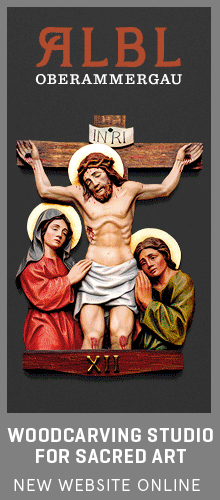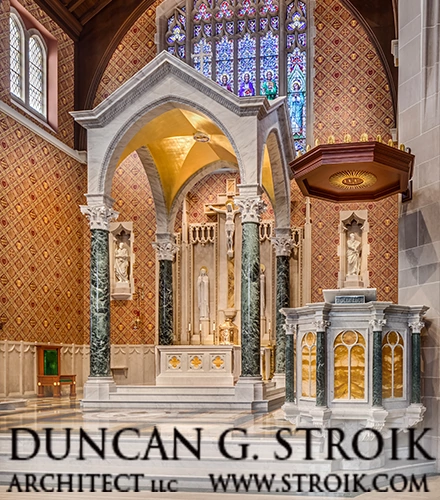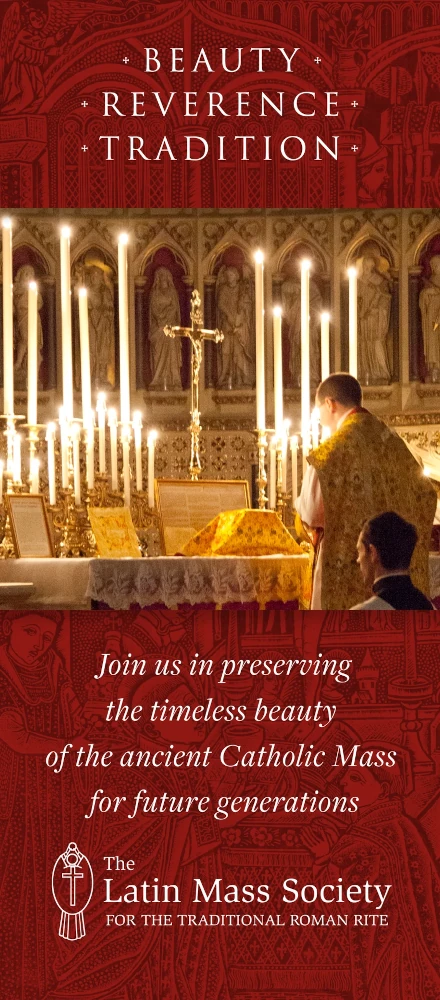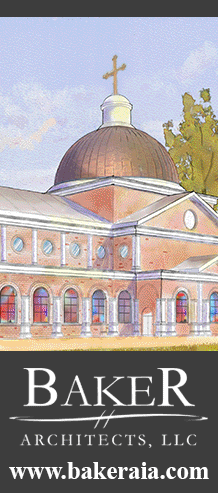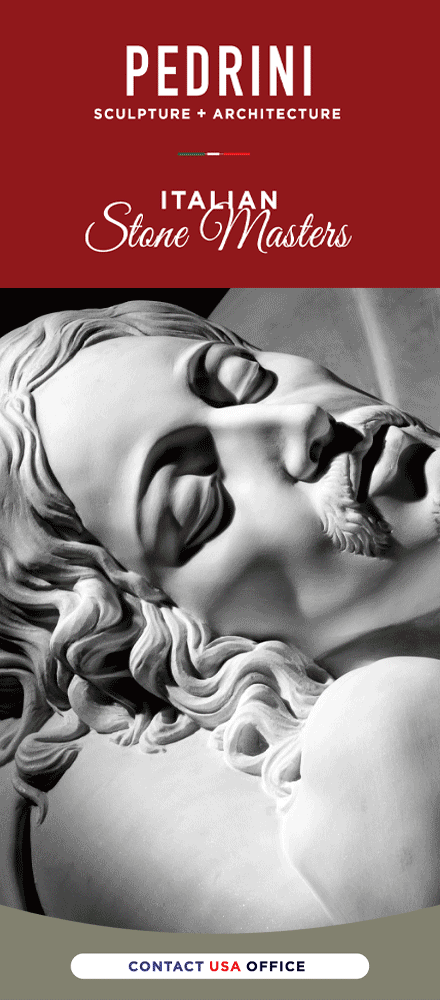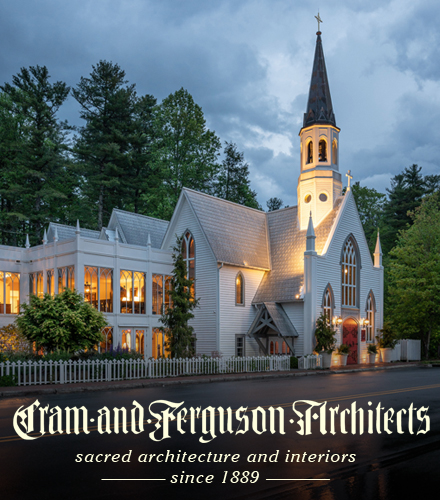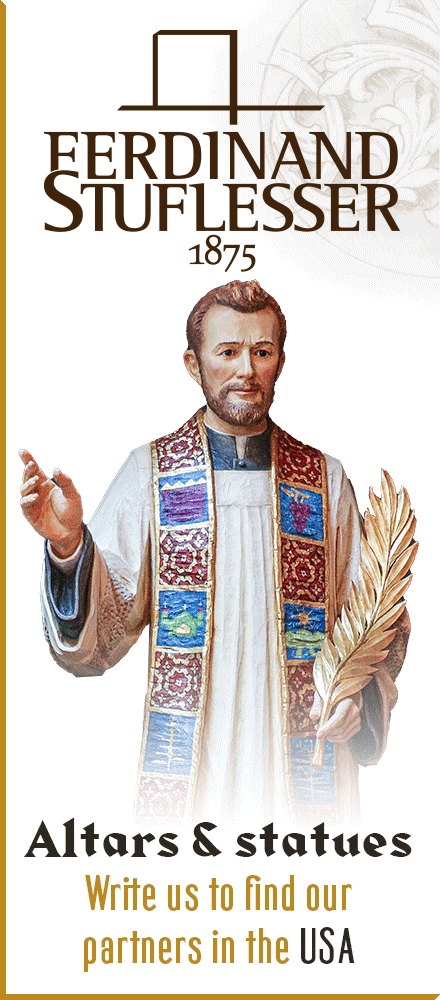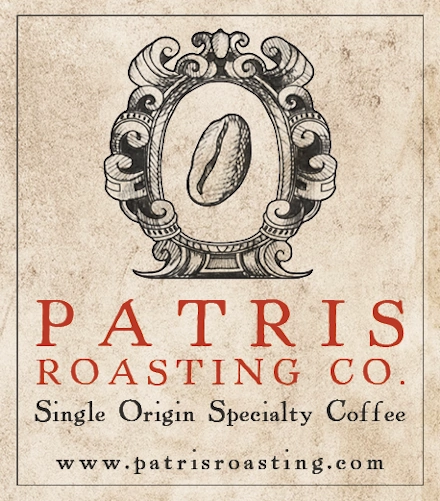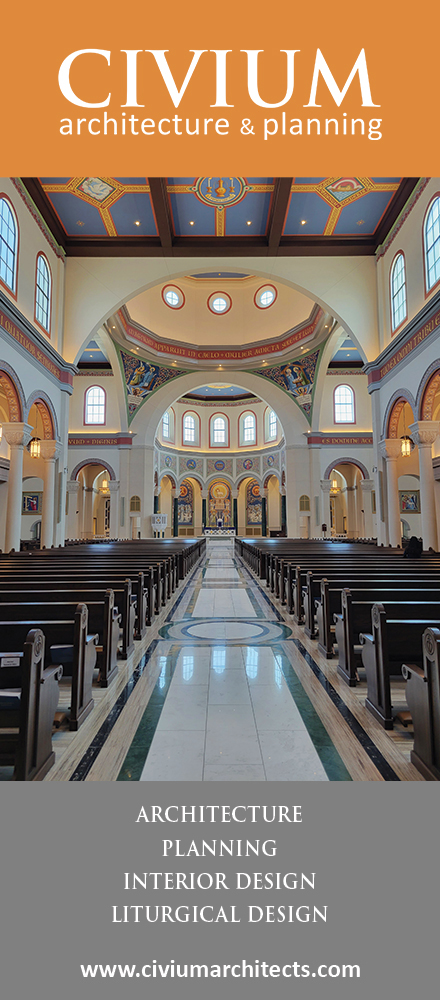[Part 2 of 2 in our series on the Origin and Development of Roman Vestments]
II. The Development (and Future?) of Vestments in the Roman Rite
I would now like to shift our attention away from the origins and earlier history of Christian vestments to the specific question of the development of vestments in the Roman rite.
In our earlier history, many vestments, being derived from Roman civil clothing took the form of wool as the material they were made from. As well, materials such as silk were still less commonly found in the West. By the 9th century, silk had by then become much more common in the West and it had become the normative material employed in the construction of liturgical vestments.
James identifies the apparels as one of the most prominent feature on mediaeval liturgical vestments. We have already discussed the ornaments on the albs, by the middle ages, not going all the way around the alb, but being in two rectangular panels, front and back, as well as the presence of similiarly ornamented cuffs. Often an extra pair were put on the back and on the breast, which symbolized the five wounds of Christ. The ornamented amice further came to fit into the mystical scheme as a symbolizing the crown of thorns.
An interesting variant upon this was to be found in Milan, home of the Ambrosian rite, where the decorated panels were not sewn to the bottom of the alb, but rather suspended by ornamental cords from the cincture. Likewise, the decorative panel on the amice was a serperate piece attached by cords once the chasuble was put on.
The dalmatic itself historically being a kind of exotic, more decorative alb, often would have similar decorative panels placed upon it – though it should be remembered that the vertical “stripes” are actually part of the historical design of these vestments, and not a later ornament.
As was mentioned earlier as well, the early shape of vestments were conical, being gathered up at the arms, and the material was free falling. These vestments went down below the knees, and at this time, so to did stoles, reaching to the ankles, and as also mentioned previously, so too did dalmatics and tunicles reach below the knees. Such vestment designs may be found not only through the middle ages and before, but, James points out, also into the 15th and 16th century on the effigies of Cardinals and Popes. (A number of days ago, I had posted a piece from a museum showing a 14th century red vestment in “fiddleback” style; I have wondered whether this vestment wasn't originally a more ample, conical vestment that was later, perhaps in the 17th or 18th century, then “altered” according with the liturgical fashion of that day. I now believe it likely wise, and certainly it would better explain the pattern of embroidery on that vestment which seems more suited to an ample vestment.]
It was around the time of the 16th century that the chasuble begins to be cut down in size “at a greatly increased pace” (James) throughout the Latin Church. “The introduction of velvet and silk brocades and the increasing heaviness of the embroidery rendered the old and very full shapes, easy enough to wear when made of a supple material, now no longer tolerable; and the same hands which had begun to overlay the vestments with stiff and heavy work of various sorts began also to cut and clip away their ample folds.” It was during the later 16th and 17th century that extensive innovations in vestment designs begins to be seen on a larger, wider scale.
During the time of the 13th and 14th centuries, there was a slight modification in the conical vestment, though quite minor, resulting in some having a slightly pointed bottom and others slightly more rounded with a little less material to fold up onto the hands. It still, however, remained substantially conical in shape and design. In the 15th and 16th centuries, this was tailored a bit further , bearing a more proximate relation to what people today know as “gothic”, being still free-flowing, but where the material comes down to the cuffs of the wearer approximately, without any folding required.
The following images illustrate at least some of these styles in the order of evolution (though do not include every variant described above).
(The Conical: the original form)
(A modified form of the conical with less length in the arms. Probably the most common today.)
(The most tailored form of gothic coming from the conical family.)
(The 16th-17th century variation of the time of St. Philip Neri and St. Ignatius. One can see the modern fiddleback prefigured here, but still the reference back to the more ample forms of chasuble.)
(A front view of the modern fiddleback that arose out of the 18th and 19th centuries particularly. A Spanish variant on this is even more tapered at the top, revealing the shoulders even from the backside.)
The Fiddleback Controversy
Still to this day does the question of “Roman” vs. “Gothic” vestments (a distinction which is spurious incidentally) raise debate. This was no different during that time and resistance is evident. St. Charles Borromeo, Cardinal Archbishop of Milan, seeking to curtail the cutting back of the vestments laid down legislation on matters such as the minimum dimensions of the chasuble which declared that it should be at least 54 inches in width, from side to side, and should reach nearly to the heels of the priest. Likewise, the apparels on the alb and amice were also insisted upon, at least for solemn occasions. Further resistance to this development of the narrower, fiddleback style of chasuble can be seen in the words of the 17th century Bishop of Toul (which also gives us some clues as to the variances in form): “So cut down is the chasuble... that at the sides it hardly covers the shoulders, much less reaches to the elbows; and this cutting-down has been effected without any sort of warrant of the Holy See or ecclesiastical law, but entirely through the private judgement of individuals ... Not only have they deformed the priestly garment itself until it bears no further resemblance whatever to its ancient shape, but they have also deprived it of its mystical reason for being the topmost vestment...” The Bishop goes on to suggest that some relaxing of the ampleness of the form is reasonable, within limits, so as to not overburden the wearer. Still further opposition can be found in the likes of Cardinal Bona, who likewise asserts a lack of authority in the making of these changes. A French writer of the time, De Vert, commented as such on vestment makers of his day: “who are allowed the liberty of nibbling, clipping, cutting, slashing, shortening, just as the whim may take them, chasubles, dalmatics, tunicles, and other priestly garments or ornaments... in a word, they gives these vestments what shape they would like, without consulting the bishop...”
As a footnote to this matter, the shortening that occurred to the chasuble in its length and breadth also occurred with the surplice. In the midde ages the surplice reached only a few inches from the ground and had very full sleeves. At this time, it had no lace, just as the alb had no lace
Arguably, the use of lace also dates from the same period of the 17th century onwards and took the place of ornamented panels of the cuffs and base of the alb.
A Modest Proposal: The Future of our Vesture
Having considered the origins, history and development of our liturgical vesture, I wish to venture into risky territory and throw out a meditation and proposal.
First some background. In certain parts of England since the Catholic revival, and through the liturgical movement, we have seen a movement back toward the fuller tradition of the chasuble and away from the fiddleback style. At times this has taken the form of a polemic – Raymund James' work that I have been basing this piece off of is no exception, being definitely against the fiddleback style and for the greater restoration of the ample Romano-gothic forms. Similarly in Catholic revival England, there was a definite battle that generally occurred between the advocates of the gothic revival, and those who favoured the baroque styles. This controversy continues, though in a much quieter way, today as architects pursue neo-classical styles of architecture on the one hand, Romanesque on the other, and with a noted hesitancy to design in gothic forms – perhaps because so much of it was done since the 19th century revival.
In modern Roman rite parishes in North America, the fiddleback style is now almost completely the parlance of classical rite communities, and in parts of Europe while they are seen, they remain rarer sightings. In classical rite priestly societies we distinctly see a preference for the fiddleback style with one exception: that of Tridentine monastic and religious communities where the ample Gothic style seems to be preferred.
Whether this rarity is a bad thing or no depends upon one's point of view. Indeed, the matter raises not a little debate when it arises. In fact, for some in Tridentine rite communities, some seem to have come to identify the fiddleback chasuble as the vestment of the traditional Catholic liturgy – perhaps in due part today because it is primarily there that it is retained – as though it were the particular vestment of that ritual tradition, akin to the uniqueness of Byzantine vestments for the Byzantine rite.
In many ways this equation is unfortunate, being rather narrow in focus. A fundamental aspect of the classical liturgical movement has been the sense of both preserving and re-discovering our classical liturgical spirituality. This means not simply preserving the pre-conciliar status quo, but actually going into the very root and depths of our tradition to root out those things which are particularly rich parts of our liturgical tradition and history and giving them renewed life; distinguishing them from that which may simply be the accidents of more recent history which we may wish to revise or reconsider, in much the same way we would say of the products 1960's culture in the Church today. In so doing, while accepting the principle of organic development and bearing in mind what is and is not dogmatic, we should avoid the temptation to equate what is “traditional” with merely what was customary prior to the Council, or even what has been in the recent history of the Church, without due consideration of our liturgical history and patrimony. And while we ought not be antiquarians certainly we know that this does not give a “carte blanche” for any and every development in our liturgies and in our churches. Some developments may be more or less desireable and we might consider whether to roll them back or return to some more ancient, possibly more venerable form. A good example of such a practice has been the promotion by St. Pius X of the restoration of Gregorian chant in the liturgy, and the curtailing of certain kinds of liturgical music less suited to the character of the sacred liturgy. (Of course it goes without saying this sort of thing must be done with great discernment and respect and due discretion.)
In the case of these styles, one must of course be careful to not dogmatize them. But one can suggest that perhaps this or that style is more representative of our tradition, and thus also a more dignified, solemn and fitting expression, in much the way we can speak of chant as being particularly suited to the character of the liturgy, iconography a particularly venerable form of liturgical art, or the gothic as well suited to our Catholic churches.
I believe that such restorations, particularly of our most ancient and longstanding of vesture, put hand in hand with the restoration of our chant would manifestly increase the edification of the faithful, and help restore the depth of our liturgical tradition, spirituality and symbolism. Further it may even help regain for men a strong sense of their vocation in the Church, alongside that of women. These things represent amongst the finest periods of our tradition, including the patristic period and the great ages of Faith, the ages of the Cathedrals of Europe. Particularly in an era when many men feel that religion is the domain of women, it is a matter worthy our attention and consideration.
Seminarians and priests are ultimately the one's who can effect this in the here and now. I would heartily encourage them to do so, and I would encourage my classical rite brethren to re-assess the perception that can exist in our beloved communities and orders which seemingly equates the fiddleback and the lace alb as the traditional vesture of the Catholic cleric. Let us, I pray, regain a deeper sense of this matter, and let us not be afraid to critically examine these matters in view precisely of our tradition, though always with an openess to legitimate development and variety.
It seems to me that our new liturgical movement must go deeper than what merely was these past couple of centuries, particularly centuries so secular, decadent and problematic as those of the Enlightenment and age of commercialism. If we look closely at those periods, we can identify the very seeds of the cult of novelty and the deprecation of our tradition which so continues to afflict us today.
These thoughts are bound to be controversial, and they are not meant to be polemical critiques. Some of these matters which I speak of with a tinge of criticism are those which I myself can at times quite like. For the reader who might be defensive, know that I do not particularly mind laced albs and surplices (though I like them not too short) or fiddlebacks (though likewise, not too short); and while admittedly the forms I have promoted in this piece are indeed more preferable to my own taste and what I hold as the ideal, know that it arises not simply out of taste, since the former styles are not repulsive to me. That being said, I put out these considerations in view of what might be best and most universally edifying, and most truly representative of our tradition.
To that end, while they needn't be as ample as the conical vestment, I say let us bring back our full flowing chasubles and our appareled amices and albs, ornamented with images of Christ and the saints, in deep, rich colours and iconographic brocades; bring as well back that more full form that was the pre-cursor to the fiddleback; bring back the length of our vestments and our surplices. Bring them back both to the modern Roman rite and the classical Roman rite. Do it not for the sake of novelty, not for the sake of archeologism, but for the continuation of our liturgical tradition and some of the most edifying forms it has produced.

